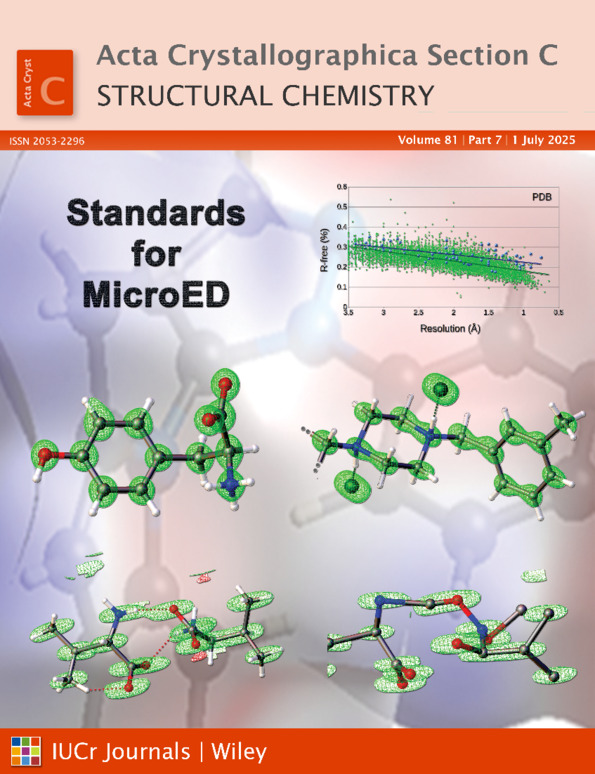Novel bioactive coumarin derivatives: structural features and predictive bioactivity evaluation
Abstract
The synthesis and structural characterization of two coumarin derivatives, ethyl 7-(methanesulfonyloxy)-2-oxo-2H-chromene-3-carboxylate, C13H12O7S, Cou01, and ethyl 7-(benzoyloxy)-2-oxo-2H-chromene-3-carboxylate, C19H14O6, Cou02, are reported. The compounds were characterized by NMR spectroscopy, mass spectrometry and single-crystal X-ray diffraction. The X-ray diffraction analyses showed that Cou01 crystallized in the orthorhombic space group Pna21, while Cou02 crystallized in the monoclinic space group P21/c. The packing of both derivatives is controlled by C—H…O hydrogen-bond networks between the coumarin nuclei and the substituent groups at the 7-position. In silico evaluation through density functional theory (DFT) calculations afforded an investigation of the electronic properties, showing that the molecular electrostatic potential (MEP) maps correlate with the formation of hydrogen bonds in the derivatives at the highest and lowest electronic density sites (O and H atoms). The highest occupied molecular orbital (HOMO), lowest unoccupied molecular orbital (LUMO) and HOMO–LUMO gap indicate that Cou01 has good reactivity and electron-donating potential. Global reactivity analysis confirms that this derivative is more reactive (nucleophilic) and polarized. Finally, predictions of antioxidant and anti-inflammatory bioactivities reveal that the substituent group in the 7-position has a significant influence on the bioactivity score predictions and the improvement of toxicological and side effects. Results suggest that Cou01 is a novel and promising molecule with good potential as an antioxidant and anti-inflammatory agent.




